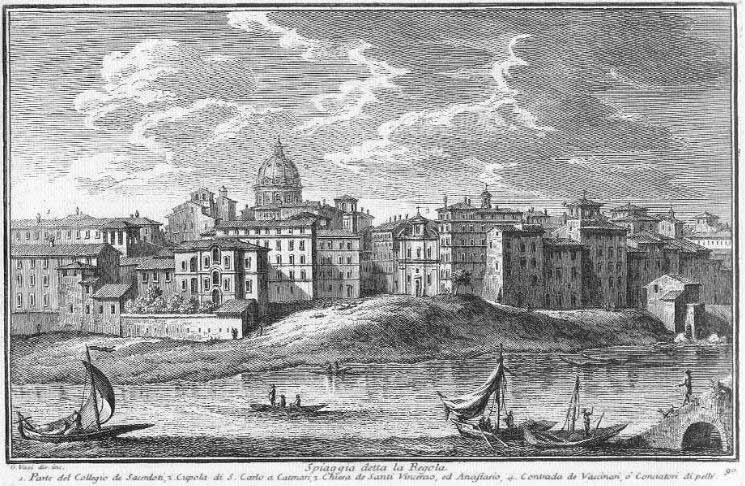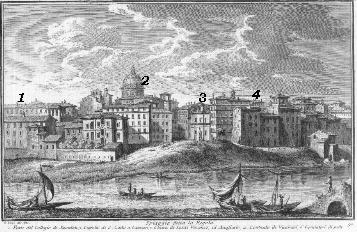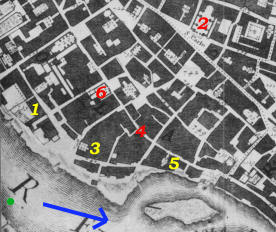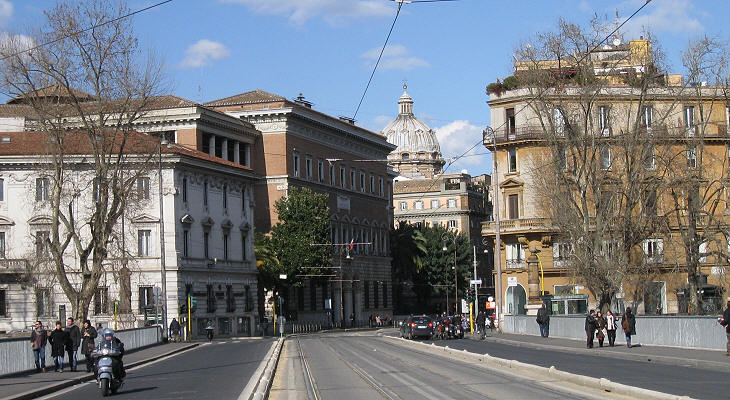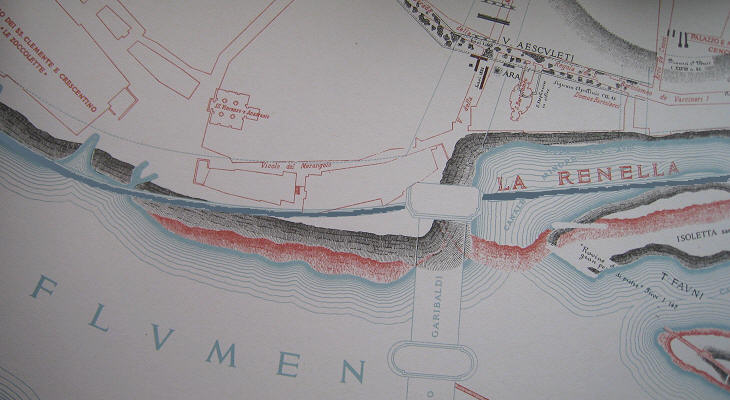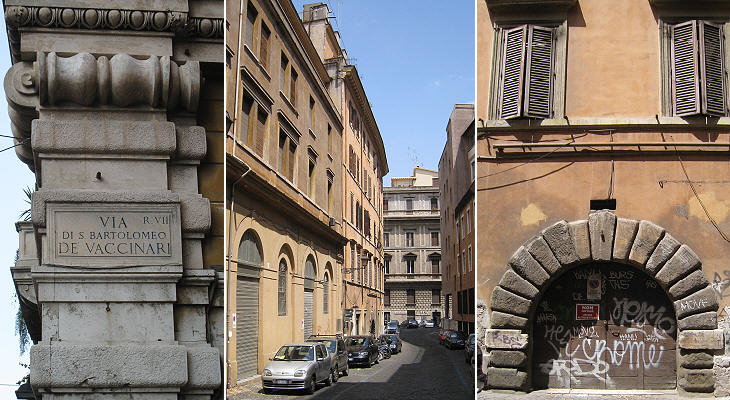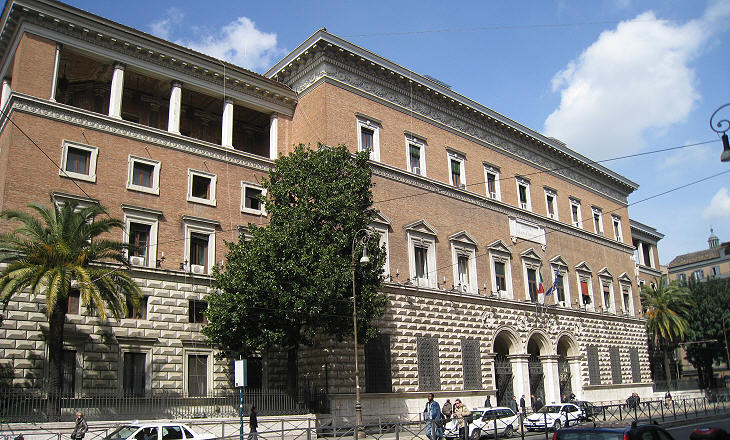  What's New! Detailed Sitemap All images © by Roberto Piperno, owner of the domain. Write to romapip@quipo.it. Text edited by Rosamie Moore. Page revised in May 2010. | Spiaggia detta la Regola (Book 5) (View D8) (Day 7) (Rione Regola) In this page: The plate by Giuseppe Vasi Today's view Contrada dei Vaccinari (S. Bartolomeo dei Vaccinari) Ministero di Grazia e Giustizia The Plate (No. 90)
Floods and lack of maintenance caused the banks of the Tiber to have an irregular height; in the XVIIIth century a mound of sand on the left bank of the river had risen much higher than the level of the streets behind it, as this etching by Giuseppe Vasi shows. The view is taken from the green dot in the small 1748 map here below. In the description below the plate Vasi made reference to: 1) Part of Collegio Ecclesiastico; 2) Dome of S. Carlo a Catenari; 3) SS. Vincenzo e Anastasio; 4) Contrada (street) de' Vaccinari (tanners). 1) and 2) are shown in detail in other pages. The small map shows also 5) S. Bartolomeo dei Vaccinari and 6) S. Paolo alla Regola.
Only the dome of S. Carlo dei Catinari in the background tells us that we are looking at the same site shown in the etching.
In 1885-86 the whole area shown in the etching was redesigned and almost all the buildings near the river bank were pulled down. The small church of SS.
Vincenzo e Anastasio belonged to the guild of the cooks; it was very old, but it had been rebuilt in 1640 so it was not deemed of historical or artistic value and it was pulled down.
The workshops of the tanners were located near the river bank; in 1570 the guild of the tanners was assigned an old church (S. Stefano de Arenula); the new owners dedicated it to St. Bartholomew, their patron saint; later on the church was entirely rebuilt.
Several old houses were pulled down in 1914 to make room for a large building by Pio Piacentini; because of WWI the palace was completed only in 1929; Piacentini designed an early Renaissance palace with features typical of the architecture of Ferrara, very different from Palazzo delle Esposizioni, one of his previous works; the comparison between the two buildings shows Piacentini's move towards a more composed design.
Next plate in Book 5: Veduta della Rinella Next step in Day 7 itinerary: S. Maria in Monticelli Next step in your tour of Rione Regola: S. Maria in Monticelli |
